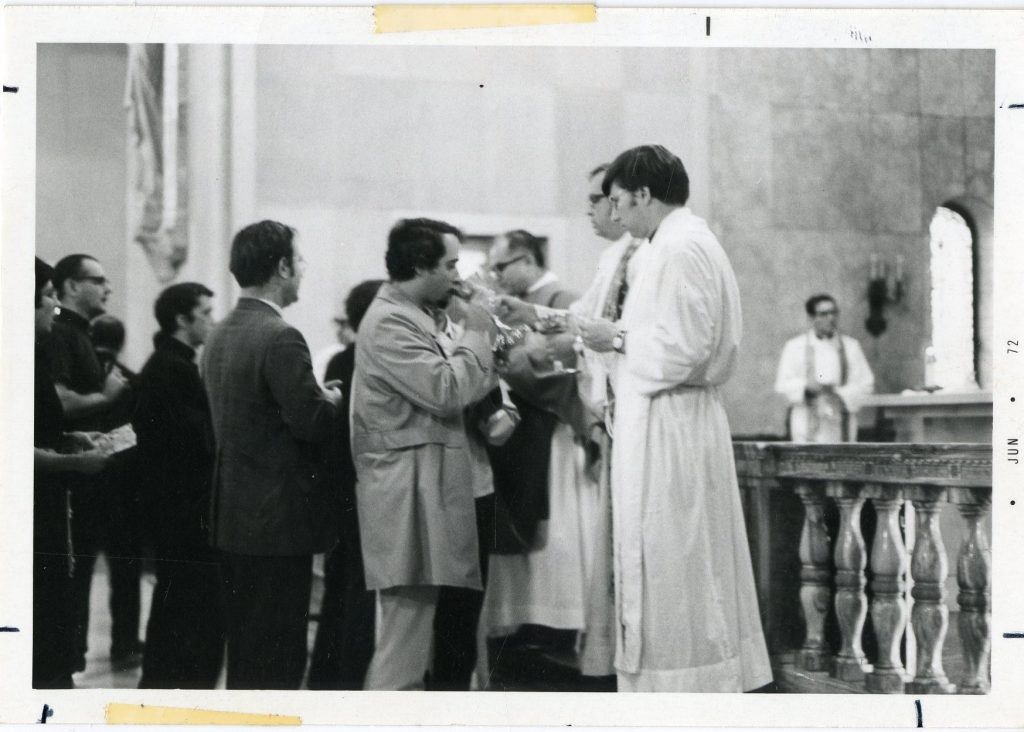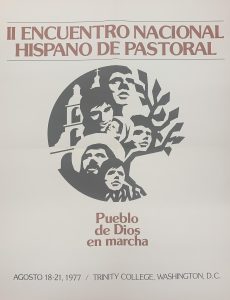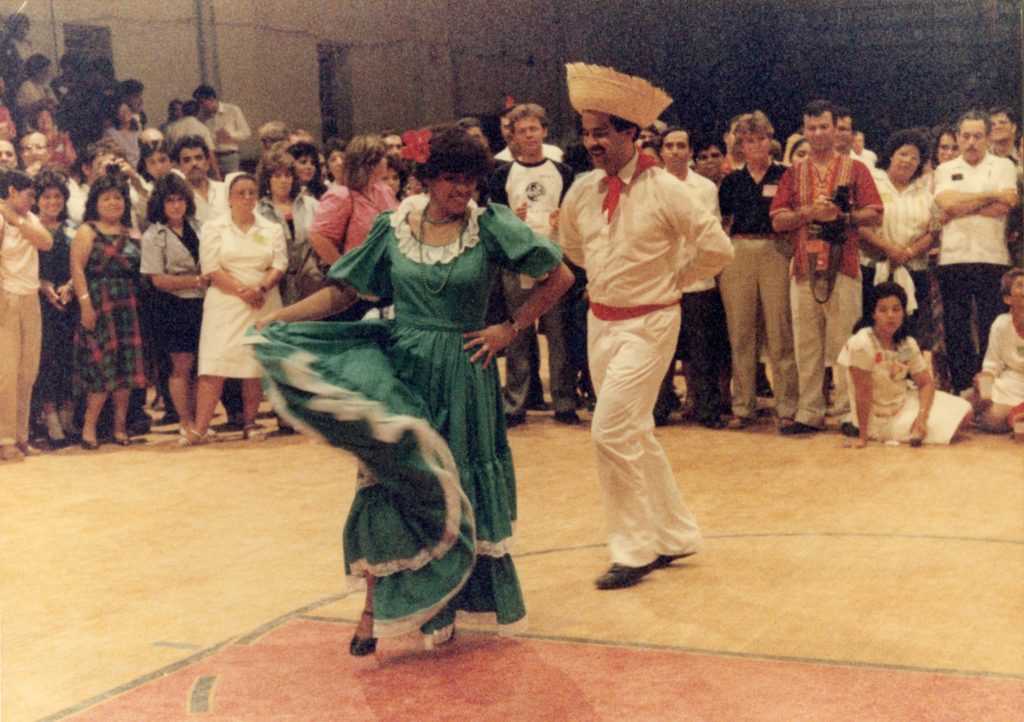June 19th, 2022 marked the fiftieth anniversary of the first Encuentro and, as it’s currently Hispanic heritage month, we’d like to take a moment to reflect on one of the events that have held an important part in shaping the modern Catholic Hispanic and Latino communities.
The word encuentro means ‘meeting’ in Spanish, but the Encuentros that have taken place periodically in the last fifty years have been far more than just a simple meeting. Leaders of the First Encuentro interpreted the word to mean a ‘coming together’ and this is exactly what they hoped to do for Hispanic and Latino Catholics. Initiated in part as a response to Vatican II reforms by a community that felt they were not being heard, the Encuentros were meant to provide a way to amplify the many voices, by combining them into one.

The First Encuentro (or Prima Encuentro) was held at Trinity college in 1972. Its results were encouraging. The Ad Hoc Committee charged with accessing the Encuentro document approved (at least conditionally) 50 of the 74 recommendations, with all the social concerns being accepted. According to Luis A. Tampe, “The First Encuentro viewed the Church as a work in progress and envisioned the Holy Spirit as guiding the Hispanic faithful so that the First Encuentro could be considered an expression of the sensus fidelium Hispanorum (the sense of the Hispanic faithful) and their reading of and responding to the signs of the times.”

The Second Encuentro, which took place in 1977, built upon many of the themes and resolutions of the First Encuentro, while also looking for ways in which to improve and grow its vision. Some notable additions to the Second Encuentro were the creation of a Youth Panel, to address concerns of the younger generation falling out of the faith, and discussions over how to ameliorate the plight of migrant workers, who were given little to no protection from U.S. law.
The Second Encuentro has been criticized by some as being somewhat chaotic and disorganized. However Pablo Sedillo, the head of the Secretariat of the Spanish Speaking of the United States Conference of Catholic Bishops, pushes back on this claim, saying of the disarray caused by so many unregistered people deciding to attend, “ I don’t attribute that to a lack of organization. I attribute that to just a community that was absolutely hungry to participate and tell [Church leaders] in a public forum how they felt about the Church. I really don’t see anything wrong with that.” Even disorganized as it was, the Second Encuentro provided an opportunity for Hispanic Catholics to have their voices heard by the Catholic Church.

In 1985, after many months of pre-planning, the Third Encuentro took place at Catholic University. Its focus was on growing inclusion, which sparked some fairly controversial debates. There were even discussions on whether or not women ought to be ordained. Excitement for the event sparked many other activities around which people could celebrate their faith, such as a pilgrimage to Guadalupe, which took place in 1984. Additionally, several smaller meetings were held after the Encuentro to insure that goals were being met and themes stayed relevant.
Continuing the prior themes of growing inclusion, the fourth Encuentro (or ‘Encuentro 2000’ as it was referred to due to its falling around the millennium) was designed as a means of increasing solidarity amongst other minority groups within the Catholic Church. Encuentro 2000 was as much a celebration of culture as it was a call to action.
The Encuentros are still happening; the last one was as recent as 2018. For many, they represent a unified effort for Hispanic and Latino Catholics to come together and make their voices heard. They brought out leaders in the community, and gave the people a sense of empowerment. They are a testament to a community committed to their culture and their faith, and to making sure others are admitted to it as well.
To see Encuentro materials housed in the Catholic University archives, go to the finding aid of the division of Cultural Diversity, part of the United States Conference of Catholic Bishops.
